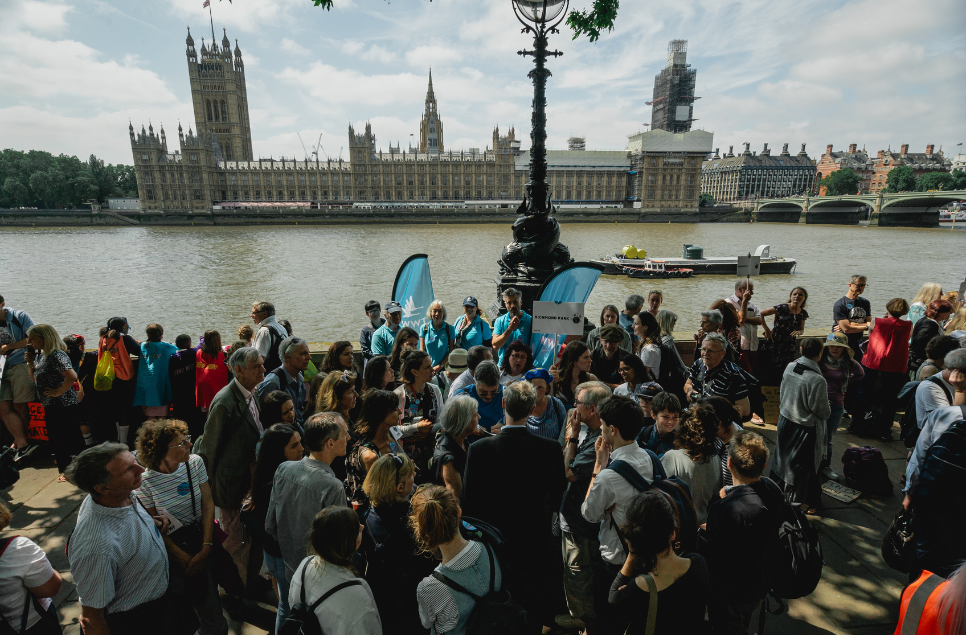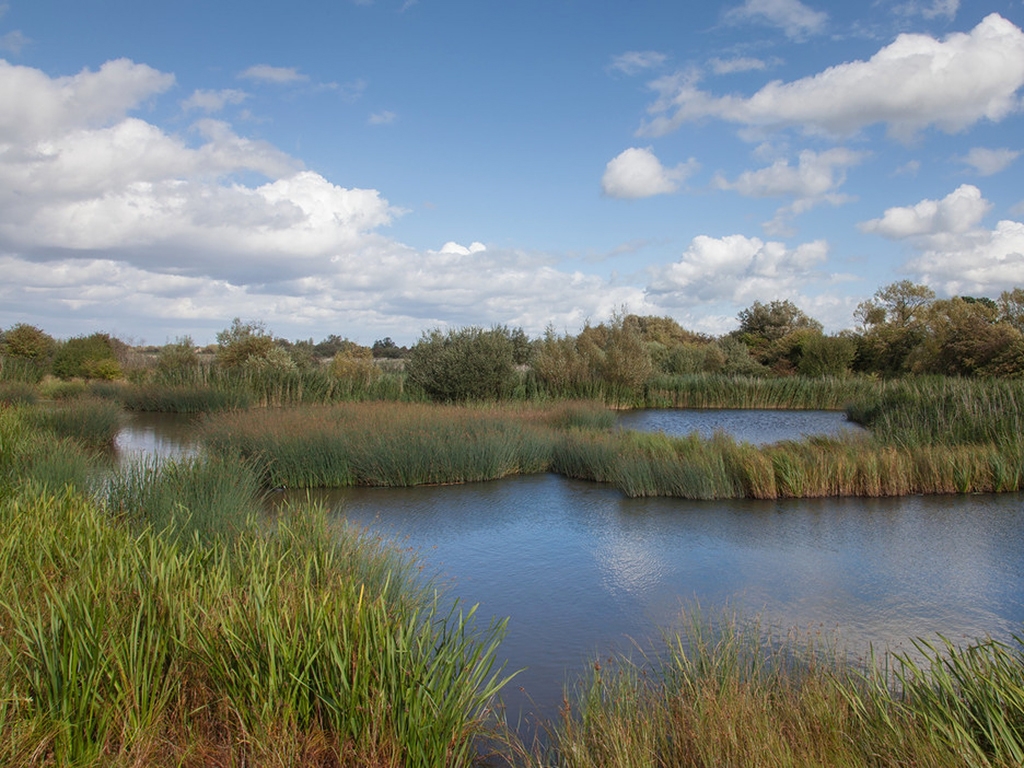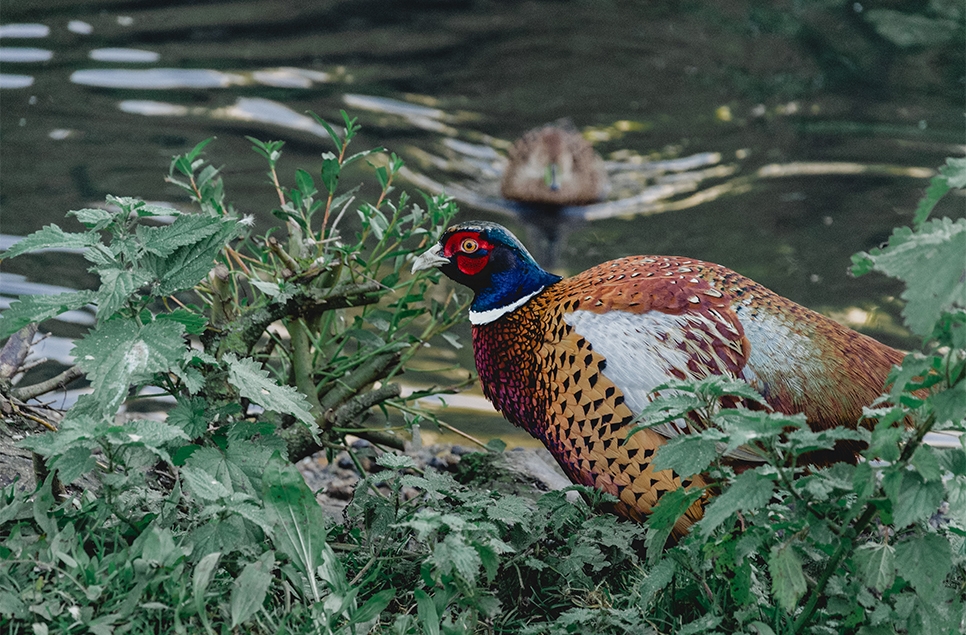Mini-wetland revolution could help wildlife beat the heat and boost urban biodiversity
This summer, we are calling for everyone to build their own tiny ponds, drainpipe wetlands and bog gardens in backyards and on balconies to help nature thrive in soaring temperatures and help reverse the UK’s devastating decline in biodiversity.
Wetlands support more life than any other habitat on earth, and mini-wetlands like ponds are often more nature-rich metre for metre than larger water bodies such as rivers and lakes (Wright et al., 1996; Biggs et al., 2005).
Ponds support two thirds of all wetland plants and animals found in Britain (Williams et al., 1997) and research has shown that these small wetlands in built-up areas can support similar levels of insect life to their rural counterparts (Hill et al. 2016). Blue spaces, no matter how small, could be key in helping combat the UK’s alarmingly low levels of biodiversity, particularly in urban areas.
New research, launched today, shows that people are keen to help, with over half of the population currently gardening to attract more wildlife. However, one in three of these nature-lovers are missing out on one of the single most effective ways to help nature because they feel they don't have enough space to create a small wetland like a pond.
Our new campaign is providing the answer, encouraging people to create tiny wetlands that can fit into any outside area no matter how small and often don’t need gardens. The charity is also encouraging people to get together with neighbours and community groups to create networks of mini-wetlands to help water-loving species move around.
Creating these blue patchworks of wetlands in our towns and cities is particularly important in the summer, when wildlife often struggle to find water to drink, bathe and cool down.
Mini-wetlands act as biodiversity ‘hot spots’ because they contain a large variety of mini-habitats which support lots of different wildlife. They often contain areas of wet mud, shallow water, deep pools and different types of vegetation, all of which are vital homes to a huge range of species, including pond worms, diving beetles, dragonflies and water snails.
To help as many people as possible create mini-wetlands we have created a series of guides and how-to videos showing how anyone, for less than £20, can upcycle an old washing up bowl or pot, add pond plants and have a mini-wetland with the potential to attract frogs, dragonflies and even bats to a garden or balcony – the perfect project for the summer holidays.
The group’s mini-wetland advice pages cover everything from where to create your mini-wetland, which type would suit you and your space best and tips on how to fund larger community projects.
Each of the charity’s ten UK wetland centres will be showcasing their own ponds, drainpipe wetlands and more to demonstrate what species your mini-wetland might be able to attract.
Naturalist, broadcaster and WWT Ambassador Lucy Lapwing backs the campaign, adding:
“You can have a wetland on so many different scales – you can have one in a bucket or you can have one that’s massive and it still has the effect of drawing in different species and creating this tangle of wildlife.
“As a kid I spent a lot of time up to my knees in ponds and loved finding whirligigs or water boatmen, and the absolute jackpot was finding a newt or a frog. By adding a mini-wetland to your outdoor space you could get these little beauties as new neighbours.
“And what more rewarding thing can there be than creating a space for life and then seeing life flourish in it? I just think it’s magical.”
Nature presenter and WWT Vice President Mike Dilger added:
"A drainpipe wetland, bog garden or barrel pond can do so much for nature in our towns and cities. These mini-wetlands provide fresh water for animals to drink, homes for amphibians and insects and places to wash off and cool down for birds like starlings, sparrows and blue tits struggling with the heat.
“Even the smallest body of water can provide serious benefits to wildlife visiting your neighbourhood, the world would be a better place if everyone had their own mini-wetland.”
Community Action Manager at WWT Nick Oliver said:
“The UK has lost 75% of its wetlands in the last 300 years and as many as half of our ponds since the 1800s. Every drainpipe wetland, tiny pond or rain garden added to the urban landscape provides spaces to rest, refuel and reproduce for wetland species.
“With a hot summer expected this year there has never been a more important time to create these urban “blue” spaces and your backyard mini-wetland or community wetland project could be a vital part of recreating a wetter landscape.
“WWT already works with a broad range of community groups but we hope showing how anyone can create their own mini-wetland will spark a wave of people making space for watery nature in towns and cities, giving wildlife the biggest boost we can as individuals.”
All figures, unless otherwise stated, are from YouGov Plc. Total sample size was 2067 adults. Fieldwork was undertaken between 7th - 8th June 2023. The survey was carried out online. The figures have been weighted and are representative of all UK adults (aged 18+).


